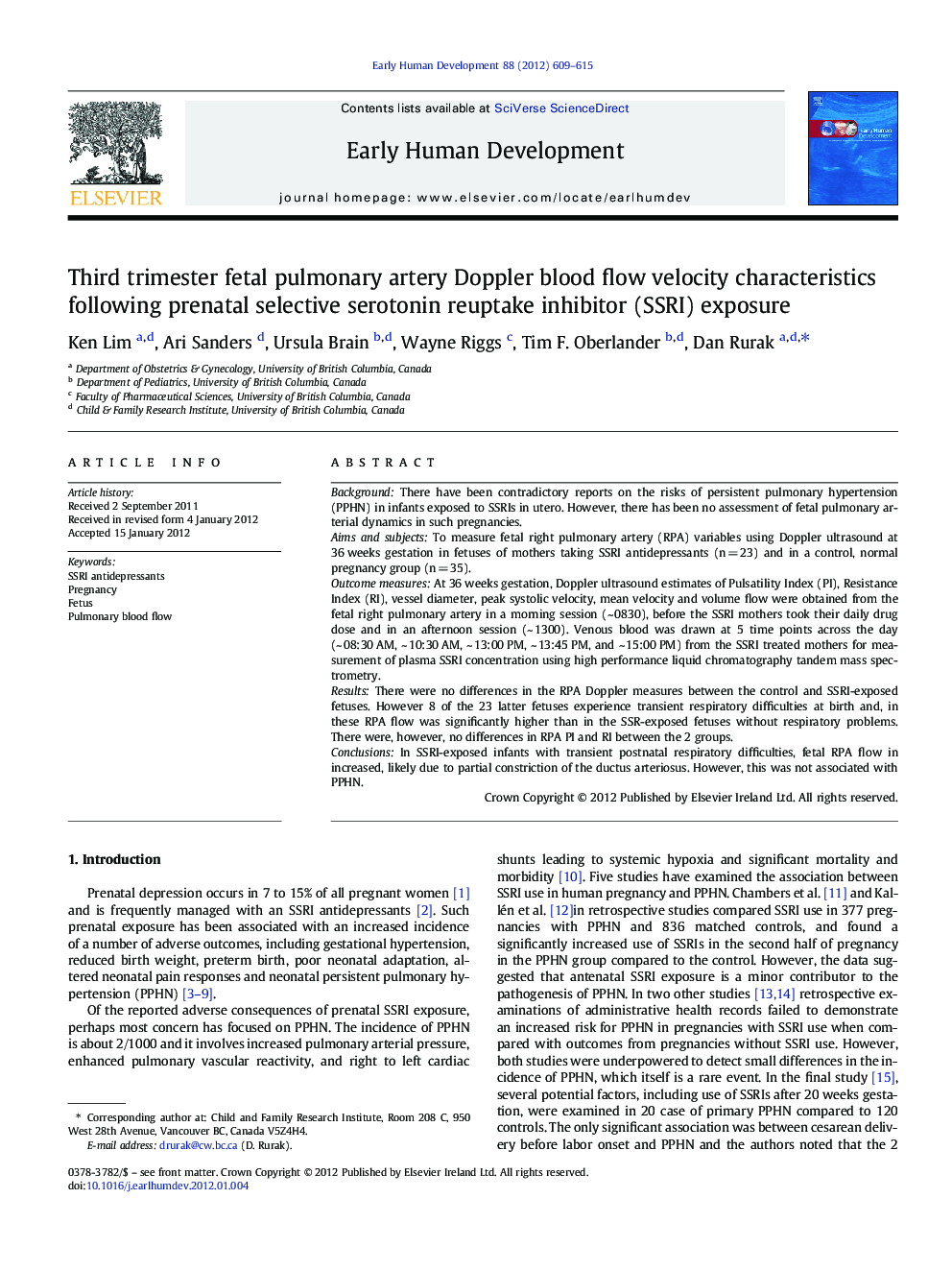| Article ID | Journal | Published Year | Pages | File Type |
|---|---|---|---|---|
| 3916847 | Early Human Development | 2012 | 7 Pages |
BackgroundThere have been contradictory reports on the risks of persistent pulmonary hypertension (PPHN) in infants exposed to SSRIs in utero. However, there has been no assessment of fetal pulmonary arterial dynamics in such pregnancies.Aims and subjectsTo measure fetal right pulmonary artery (RPA) variables using Doppler ultrasound at 36 weeks gestation in fetuses of mothers taking SSRI antidepressants (n = 23) and in a control, normal pregnancy group (n = 35).Outcome measuresAt 36 weeks gestation, Doppler ultrasound estimates of Pulsatility Index (PI), Resistance Index (RI), vessel diameter, peak systolic velocity, mean velocity and volume flow were obtained from the fetal right pulmonary artery in a morning session (~ 0830), before the SSRI mothers took their daily drug dose and in an afternoon session (~ 1300). Venous blood was drawn at 5 time points across the day (~ 08:30 AM, ~ 10:30 AM, ~ 13:00 PM, ~ 13:45 PM, and ~ 15:00 PM) from the SSRI treated mothers for measurement of plasma SSRI concentration using high performance liquid chromatography tandem mass spectrometry.ResultsThere were no differences in the RPA Doppler measures between the control and SSRI-exposed fetuses. However 8 of the 23 latter fetuses experience transient respiratory difficulties at birth and, in these RPA flow was significantly higher than in the SSR-exposed fetuses without respiratory problems. There were, however, no differences in RPA PI and RI between the 2 groups.ConclusionsIn SSRI-exposed infants with transient postnatal respiratory difficulties, fetal RPA flow in increased, likely due to partial constriction of the ductus arteriosus. However, this was not associated with PPHN.
